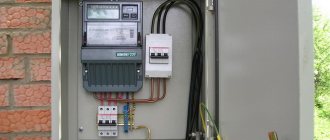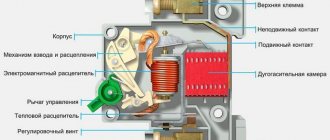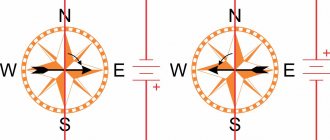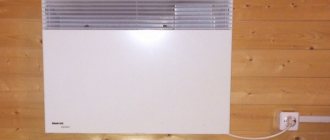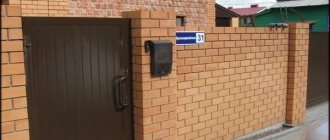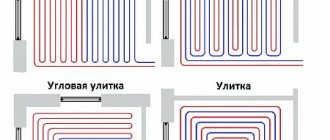Summer cottage construction has recently become very popular. Many homeowners try to do as much work as possible on the construction, finishing and connecting to communications of their cottage themselves.
This also applies to the installation of electrical wiring in all buildings of the summer cottage.
Electrifying a home is impossible without installing an electrical panel. A metering device is mounted on it - an electric meter, an RCD (residual current device) and electrical circuit breakers in the required quantity.
Do-it-yourself electrical panel for a summer residence: installation and recommendations
Summer cottage construction has recently become very popular.
Many homeowners try to do as much work as possible on the construction, finishing and connecting to communications of their cottage themselves. This also applies to the installation of electrical wiring in all buildings of the summer cottage.
Electrifying a home is impossible without installing an electrical panel. A metering device is mounted on it - an electric meter, an RCD (residual current device) and electrical circuit breakers in the required quantity.
Technical characteristics of boxes
When choosing a box for an apartment or house, you need to take into account the number of automatic machines and other electrical equipment that you plan to install to protect the electrical network.
The main guideline should be a diagram indicating the devices grouped into groups. In addition, you need to decide on the type of box, exact size, protection class and ratings.
Electrical insulation and protection class
All electrical products, including those used in everyday life, must be protected from electric shock. This also applies to slot machines.
When turning off an automatic device or taking data from a metering device, the apartment owner must be confident in his safety.
According to GOST 12.2.007.0-75 , there are five protection classes, from 0 to III.
All electrical boxes belong to class I or II electrical insulation:
- Class I – metal boxes with working insulation and 1-2 grounding elements;
- Class II – plastic boxes with reinforced insulation without grounding elements.
The electrical insulation class must be indicated in the technical documentation of the new product. You also need to consider the installation location and, depending on it, choose a box with a degree of protection from dust and humidity - from IP44 to IP65.
A sample of a plastic box for circuit breakers belonging to class II electrical insulation. The main insulating element is a plastic case that does not allow electric current to pass through.
If the box with machines is installed in the hallway, the lowest degree of protection is sufficient, but boxes for outdoor use must be marked at least IP54.
According to the installation rules, boxes for electrical devices cannot be installed in the kitchen, bathroom, combined toilet, attached swimming pool - that is, in any room where the humidity is higher than normal
Material of manufacture of the body and parts
There are 2 types of products based on the material they are made of: plastic and metal.
According to GOST standards, the production material must be resistant to various types of influences that may occur during operation: mechanical, thermal, electrical.
Metal . Boxes belonging to class I are coated with a protective coating that is resistant to corrosion. They can be equipped with additional parts made of other materials - grounding bars, contact clamps, connection devices.
Plastic . Most of the apartment panels are made from a special heat-resistant polymer - ABS plastic. This is an impact-resistant material that can withstand heating up to an average of +650°C. It is not prone to spontaneous combustion, and in the event of an emergency it can only melt, but not burn.
The design of the plastic box does not deform over time, as it takes shape during the heat treatment process. The surface is not exposed to ultraviolet radiation, which means it can be safely mounted on a pole or external wall of a building.
One of the advantages of plastic products is their beautiful and practical design. They can be placed in a visible place without fear that the appearance of technical devices will spoil the interior. To do this, the front panel is made tinted
The housings of the polymer boxes are very light and easy to install. Modern boxes have squeeze-out entries for connecting wires and reversible doors.
If the box is planned to be installed on a wooden wall, then the requirements increase. Let's assume that the parts of class II boxes, built-in or external, must be resistant to wire heating up to +850°C.
Number of rows and modules
Another important characteristic is the dimensions of the box. Inside the box there are horizontally directed strips - DIN rails.
Each of them is designed for a certain number of places (modules). The width of one place is approximately 1.75 cm. For example, one machine takes up one place, and an electric meter takes up from 5 to 8.
When designing the box assembly scheme, it is necessary to distribute the devices according to DIN rails and locations. It is better if the arrangement of devices is logical, and the machines are installed in an orderly manner, in groups
The living room box is compact in size and has an average capacity of 12-36 seats, depending on the number of electrical circuits.
But manufacturers usually expand their range by increasing the size range, so in their collections you can find the smallest boxes for 2 switches, and large panels accommodating up to 180 modules.
Small boxes are useful when protective devices are located in several places. For example, if the RCD and metering device are installed on the street, and the group panel is installed inside the house. Option for urban installation: switch + meter on the site, distribution box in the hallway.
Nominal parameters of shields
All nominal values are indicated in the technical documentation; they must be taken into account when choosing apartment or floor boxes, as there are differences. For example, in urban high-rise buildings the nominal input voltage for apartment boxes is 230 V, while for storey boxes it can be either 230 V or 400 V.
There are no differences in the rated currents of 1-phase and 3-phase input devices; for all types, values from 25 A to 63 A are suitable. The rated currents of individual machines and differential devices depend on energy consumption and can vary from 6 A to 40 A.
It should be remembered that installing an apartment box as a floor distribution board is strictly prohibited.
An example of an apartment box with one DIN rail and spare modules. According to its nominal parameters, it is suitable for installation in a 1-room apartment. If additional connection is required, free seats will come in handy
Modifications for installation on site must be designed for a minimum of 2, maximum of 4 apartments. If more connections are required, an additional box must be installed.
Installation Requirements
All requirements related to the installation of distribution panels are specified in the PUE (Electrical Installation Rules), Chapter 7.1. Let's look at the main ones.
- The location for installing the switchboard should be chosen away from heating boilers, gas stoves or cylinders, stoves, and flammable objects.
- The room where the electrical panel is located must be well ventilated, preferably naturally.
- The location where the switchboard is installed should be well lit with natural light . This is important for maintaining the structure.
- There must be constant free access to the shield. Therefore, its installation in storerooms and other utility rooms is not allowed.
The number of distribution cabinets depends on the size of the building and the number of light bulbs, electrical outlets and other electrical points. This number affects the layout and complexity of wiring throughout the building. For a country house with an area of up to 200 m2, one panel is enough .
What a do-it-yourself outdoor electrical panel for a dacha looks like, look at the photo:
Elements installed on the panel
The electrical panel is installed at the entrance to the house. It can be either internal or overhead . It is easier to install the invoice, so for a country house where it will be located in any utility room, this design is recommended.
No special preparation is required to install an outdoor switch cabinet. It just needs to be secured to the wall with dowel nails. Also, the external electrical cabinet can be mounted outdoors, for example, on a pole .
Some tips for choosing an electrical cabinet:
- Take a cabinet with a supply of installation spaces . It is better if there is free space left after assembly rather than the elements being installed end-to-end.
- Don't skimp on the cost of the case. Check that the material from which it is made is self-extinguishing .
- The best option is cabinets with removable walls. This provides easy access to structural elements.
- Make sure that the DIN rails can be easily moved or removed .
Electrical cabinet design
The design of all electrical cabinets used in the Russian Federation must comply with GOST requirements. As a rule, foreign companies have no problems with this. But if the box is purchased from a little-known import manufacturer, then you should make sure that it meets Russian standards.
The fundamental difference between metal products is the presence of a copper grounding screw on the door. It is designed for reliable electrical connection of the movable door of the box with its fixed body. Plastic modifications do not require such measures, since their body does not conduct current, and touching it cannot harm a person.
Plastic box for 18 modules
Each box for vending machines is equipped with a door. For metal products, the door is often equipped with a lock. The key to the lock is supplied with the box. Usually it is inside it. Plastic boxes for circuit breakers are also equipped with doors made of translucent plexiglass.
Note! Externally, the keys to the boxes look the same. But in fact there are several types of them. The key from one door does not fit the other. Therefore, it is important to sign the keys or mark them in some other way. For example, using a tag.
Switchgear components
As a rule, the following elements are used for electrical distribution panels for 220 V voltage and their operation in small country houses:
- Introductory – 30-60 A
As can be seen from this list, before calculating the number of distribution board modules, you should find out how many groups of energy consumers are at the site, and what is the total power consumption for each group.
An example of an assembled electrical panel
As an example of an electrical panel assembly, you can consider a typical wiring for an apartment. At the entrance to the box, a QF 30 A input differential circuit breaker is installed. From it, the white (phase) and blue (neutral) wires go to the Mercury 201 single-phase electricity meter. Both devices are fixed using a DIN rail. The blue (N) conductor from the meter goes to the zero bus. And the white wire (L) to the line of group circuit breakers QF1-QF4. Subsequently, individual consumers in the apartment will be powered from these machines.
The shield is supplemented with its own socket, which remains energized even if the entire apartment is de-energized. It will come in handy, for example, during renovation work.
Assembled electrical panel for a summer residence
Assembly diagram
This is a very responsible occupation that requires strict adherence to safety precautions.
The electrical panel is assembled in the following order:
- Install 35 mm DIN rails for:
- Zero bus - on insulators;
- Grounding bars - directly to the housing;
- Paketnikov;
- Counter.
- Place the input cable in the upper left corner of the cabinet.
- Install an introductory machine there.
- Install two busbars for zero and grounding.
- If there is a PEN conductor, make a jumper from the zero bus to the ground bus.
Install machines. Start with the introductory one, and then take the wires to the group fuses of the outgoing lines. Make sure that the wires in your shield intersect as little as possible .
When stripping the insulating layer on the wires, make sure that the exposed part of the core does not protrude beyond the terminal of the package. If this happens, install a special insulating tip on the exposed part of the wire.
A sample diagram for assembling an electrical panel in a country house is shown in this photo:
Recommendations for selecting and assembling panels
Selecting, installing and assembling an apartment panel will not cause difficulties for an experienced electrician. For an inexperienced person, it is better to seek help from a professional electrician.
If you decide to install and connect the vending machine yourself, you must adhere to the following tips:
- Metal boxes require a ground connection. For this purpose, there are copper bolts inside the box with the corresponding “ground” pictogram.
- Cables must not be routed under a DIN rail. Ideally, they should not touch metal parts at all.
- Wires are connected according to color coding. Brown is phase, blue is zero, yellow-green is ground.
- Next to the circuit breakers their purpose is indicated. For example, “living machine,” “kitchen machine,” and so on.
- If an electricity meter is installed in the box, its display must be visually accessible. It is advisable to place the shield at a level comfortable for the eyes from the floor, 1.5-1.8 m.
Connection
First of all, you need to connect the input automatic fuse. If it is single-pole, connect the phase. If it is bipolar, connect both phase and zero.
For the convenience of further installation of the phase on the introductory package, it is better to start from the bottom .
- Combine all RCDs and packages with comb buses or jumpers. The jumper wire must have the same cross-section as the input wire.
- Connect the outgoing electrical wires to the machines.
Zero (N) always goes to machines and RCDs from the zero bus. Phase (L) – from the input cable through jumpers or a “comb”.
To avoid confusion during installation and connection, select neutral, phase and ground wires in insulation of different colors. Most often it happens:
- Zero N – blue
- Phase L – red
- PE grounding – yellow with green dotted line
Make sure the connections are secure and carefully tighten the bolts on the fuses and busbars.
- Connect the electric meter in accordance with the diagram attached to it.
- Apply voltage to the shield
- Using a multimeter, check for voltage on the outgoing lines and packets
- Mark each machine in accordance with the switching diagram
- If the device body is not transparent, a copy of the diagram should be attached to the electrical cabinet door from the inside. In addition to complying with energy supervision requirements, this will significantly facilitate preventive and repair work on the switchboard.
IMPORTANT! After checking the load on the outgoing lines, do not forget to turn off the input automatic fuse to safely complete the work.
Installing an electrical panel in a household is not a difficult task. It is quite possible to do it with your own hands. The main thing is to follow safety rules, carefully follow all instructions and not skimp on consumables.
Make sure that the assembly of your electrical distribution panel meets all the requirements of the PUE . Otherwise, energy supervision may not allow you to connect your dacha to the power grid or indicate any violations punishable by a fine.
When assembling, check the rigidity of each element. Do not allow unnecessary crossings of wires, and even more so, their improper twisting. Correct assembly of the switchboard functionality guarantees safe connection and trouble-free operation of your household appliances under various types of loads.
Scrupulousness and adherence to standards are the key to the fire safety of your home, and therefore your comfort and peace of mind.
In conclusion, we invite you to watch a video on how to install and assemble an outdoor electrical panel for your dacha yourself:
How to assemble a 220V electrical panel yourself in a private house - assembly diagram
A well-designed and high-quality electrical panel in a private home is a guarantee of the safe operation of the entire power supply system. Since metering devices, as well as distribution and protective equipment are located inside the cabinet structure, increased attention is paid to its selection and independent production. According to the main provisions of the PUE, the input panel must meet the most stringent requirements regarding operational safety and the possibility of expanding its functionality.
Purpose of boxes for machines
Plastic and metal boxes perform the same function as distribution boards - they organize the operation of electrical equipment and serve for the electrical installation of protective devices. In the specialized literature you can find other names: box, box, shield, panel.
The main “filling” for filling the box is made up of electric machines, however, other protective devices - RCDs and difautomatic devices - can be located next to them.
There are no products for sale with pre-installed equipment. Low-voltage boxes are sold empty, and automatic protection devices are selected taking into account the characteristics of the network and installed according to the selected scheme
Large boxes contain indicators, switches, timers, differential relays. But to equip the network of a private house or one apartment, installation of additional equipment is not necessary.
If, in addition to protective equipment, an electricity meter is installed inside the box, then the panel goes from the distribution category to the metering and distribution category
Boxes are installed in apartments, on floor areas, as well as on the street, if it is necessary to connect a private home to the power supply line. They are varied in design, assembly and functions.
What is the shield for?
Previously, in private homes, separate entrance cabinets, which took up space in the premises and did not fit into the interiors, as a rule, were not made. They were traditionally installed outside the building in separate booths on a high-voltage pole. Today the situation has changed dramatically, so distribution boxes alone cannot be used. The need to assemble a 220 Volt electrical panel for a private home is caused by the following reasons:
- an increasing number of users prefer to independently monitor the condition of equipment that provides control of energy consumption, as well as protection against overvoltage and short circuits;
- the number of devices used for these purposes is steadily growing every year and requires more space for placement;
- Cabinet products have appeared that do not spoil modern interiors with their design: they have an attractive appearance and are easy to use, and are characterized by increased safety.
In a wooden house, the importance of the distribution cabinet increases significantly, since in private households the possibilities for expanding electrical equipment are great. They are limited only by the limit of electricity counted in kW/hours.
Types of shields for a private home
Electrical panels are designed for safe supply and distribution of electricity throughout a private home. Depending on their functional purpose they are divided into the following types:
- Input devices installed at the point where the power cable is connected.
- Boxes for installing a remote electric meter.
- Distribution boards mounted directly in the house and designed for distributing internal supply lines, as well as protecting them.
They are practically no different from the same products installed in apartments in urban buildings. The difference usually manifests itself only in the fact that significantly more samples of control, protective and distribution equipment are installed in them. In private households, it is also possible to make a separate panel designed specifically for servicing lighting lines.
Types of distribution board
It's no secret that our life would be impossible without electricity, so the distribution board is an important device in human life support.
There are a large number of types of distribution boards, let's look at the features of each of them:
- Main distribution boards. This type performs the main functions of receiving and distributing electric current, and supplying energy to shields for other purposes.
- Input distribution devices. This device looks like a cabinet that is designed to receive electricity directly from a transformer or from the electrical network itself.
- Automatic reserve inputs. This device is installed to provide the network with electricity in case of an emergency. It performs the functions of transferring energy from main to additional sources, and also has the properties of protecting the network from overload.
- Panels that regulate heating or lighting of a room. From the name it is clear that they ensure the functioning of lighting or heating systems in a room using a specially installed electrical apparatus.
- Automation board. Provides full automation of the lighting, ventilation and fire systems of the premises.
- Power distribution boards. Performs the functions of providing electricity to power plants in the room.
- Communications boards. Ensure the functioning of the telecommunications network, communications equipment and others.
- Floor boards. Such boards are installed in multi-storey buildings and perform the functions of receiving energy from the main distribution board and distributing it to other boards.
- Apartment panels. It is installed directly in the apartment and performs accounting and protective functions.
Shield of your own need. Performs the functions of the main shield, but provides energy only to individual objects inside the room.
You can understand that there are quite a few types of switchboards, so when working with electrical networks, you need to fully study the list of existing types of switchboards.
Choosing an installation location
Before you make an electrical panel for your dacha or home with your own hands, you should worry about choosing a place for it. It is most convenient to hang the cabinet on a section of the wall near the front door in the hallway area. In this case, the distance from the post with the outlet will be minimal, and the length of the cable to be laid will be short. It is placed in height so that it is convenient to take meter readings and switch distribution (linear) machines.
Unlike old panels with open plugs and switches, new products do not necessarily need to be placed high under the ceiling.
The product body reliably covers elements of switching equipment that are dangerous to children. The main thing is to ensure a reliable lock that can only be opened with a key.
When determining the location for installing the shield, it is also important to consider how and where exactly the power cable is inserted. When electrifying a new building, data on the layout of external networks can be obtained from specialists of the local branch of Energosbyt.
Buy a ready-made electrical panel for installation in an apartment or assemble it yourself
Standard cabinets and panels for single-phase or three-phase networks are produced in a wide variety of configurations, often their design is developed to order. You can buy a ready-made cabinet that is already fully equipped with everything you need and then add the necessary equipment to the DIN rail. It’s even easier to purchase only the body of the future shield with all installation accessories, and then assemble it yourself almost from scratch.
The positive aspects of this approach are:
- significant cost savings;
- the ability to install installation elements and devices at your own discretion, without going beyond the fundamental limitations;
- a clear understanding of how the circuit of an electrical panel assembled in-house works.
A competent approach to choosing the right solution also takes into account factors such as ease of equipment maintenance and its maintainability. It will be much easier to carry out these operations with a self-equipped closet.
Shield elements and assembly order
A properly assembled switchboard circuit is the basis for the normal operation of the entire home energy supply system. Therefore, it is important to immediately understand the composition of the future switchgear. You will need to place the following elements:
- DIN rails used for fixing electrical devices.
- Grounding bars, made in the form of strips with a set of mounting holes.
- Introductory machine.
- Electric meter mounted next to it.
- Residual current devices (RCDs).
- Linear circuit breakers.
- Surge protection relays and other devices.
As a rule, there are no particular difficulties with installing and connecting most of the listed devices. The only thing you should pay attention to is the validity of using RCDs and voltage relays. The circuit diagram of an electrical panel in an apartment with an RCD and a voltage relay guarantees its user protection from electric shock and potential surges. Therefore, their installation in a private residential building is considered mandatory.
When assembling the shield with your own hands, follow the documentation supplied with any samples of products of this type. It provides step-by-step instructions on the installation procedure for all components and how to fix them.
Types of electrical panels according to GOST
According to GOST 32395-2013, electrical panels are divided according to their purpose. Boxes have a similar division. In terms of location, there are 2 types of protective boxes:
- Located in the apartment. Designed for installation of group and accounting-group electrical panels.
- Located on the staircase. Serve to protect distribution and metering and distribution boards from dust.
A panel with machines and a counter in an apartment.
There are also differences in the method of installing the box:
- boxes built into the wall;
- with dowel fastening.
Additional Information. Shields are also divided according to the type of network. The letters “SCHO” on the door mean that this is a lighting panel, and ShchS is a power panel.
Calculation of the number of modules
Housings are sold with DIN rails already attached to them, designed for a given number of devices, which is indicated in the product name. This characteristic refers to the number of elements with a multiple of one module (18 mm), freely placed on the fixing rail. To determine their exact number, you will need to add up the dimensions of all installed products in the modules, taking into account the margin for gaps between them (3-4 mm).
The descriptions of some cabinets mention mounting rails with end caps, after removing which it is possible to free up another seat. When assembling yourself, it is better to plan the number of such modules with a small margin. If approximate calculations give the figure 66, it is advisable to choose a box with 72 module spaces.
Characteristics and specifics of a three-phase network
Electrical panel in a three-phase network
The 380 V electrical network is designed for connecting three-phase and single-phase equipment. In the case of three-phase, the connection occurs in 3 phases and a neutral to evenly distribute the load of powerful household appliances.
The presence of three phases allows the use of 4-5-core wires with a smaller cross-section and 3-4 pole automatic circuit breakers. The allocated power for the 380 V network is divided equally between phases. That is, if 18 kW is allocated, each phase will be 6 kW.
Using a three-pole or four-pole type machine, the line is de-energized in case of increased load on one phase. Taking into account the time delay of the automatic machine, it is necessary to correctly distribute this load.
Without load distribution, “phase imbalance” occurs, which leads to permanent power outages.
Case selection
The housings of the shields differ in the material used for their manufacture (metal or plastic), as well as the degree of tightness. Metal cabinets are highly durable and can withstand significant loads. They are suitable in situations where three-phase power is supplied to the house, which requires the installation of a large number of protective devices.
Since in private households such a cabinet is usually installed within the house, taking care of its tightness is not so important. The exception is the case when it comes to a box for a remote electric meter placed on the front wall of the house. Depending on the method of installation within the boundaries of the building, cabinets can be wall-mounted or built into a special niche in the wall.
In the first case, they will protrude outward, occupying some part of the living space, and in the second, they will be completely recessed into the thickness of the walls. The choice is made at the discretion of the homeowner. Plastic cabinets are available in both versions and are usually chosen to accommodate small-volume assemblies serving country houses or small cottages. In terms of strength indicators and IP degree of climate protection, they are not inferior to their metal counterparts.
Useful tips
When selecting, installing and subsequently disconnecting a panel in a private house, it is recommended to take into account the following nuances:
- the dimensions and number of mounted DIN rails should be taken with a reserve, this will be useful if it is necessary to place new equipment;
- with a three-phase power supply, it is advisable to power the lines of power sockets and lighting control from a separate panel;
- In order to increase the reliability of the operation of such systems in the cabinet, it will be necessary to provide for a breakdown of devices into groups and levels of protection.
If all rules and recommendations are followed, anyone can independently assemble and dismantle the cabinet that serves the electrical network of a private home.
Currently, I have chosen electrical panels and devices from ABB.
But knowledge of modular and panel products from Schneider Electric, Legrand, Hager allows me to assemble electrical panels from components from any manufacturer. Therefore, when choosing a company, I always go to meet the electrical panel customer.
But it should be noted that the prices from these manufacturers are almost the same . The only difference is different series of devices, but even if they are similar in parameters, they are also approximately the same. Lately, however, ABB has turned out to be cheaper than its competitors.
Below I will give a comparative calculation of the cost of an electrical panel of different series of ABB and Schneider Electric for one of the orders (calculation from 2015, but relevant ).
Comparison of prices for automatic machines, RCDs, switches from ABB and Schneider Electric.
Electrical panels, at the request of the customer, can be equipped with various additional “wants” and protections: light indicators, digital voltmeters, contactors with on/off switching of all or part of the load, timers (time relays) for turning on the load according to a schedule, voltage control relays, etc.
Assembly and installation of an electrical panel in a house, apartment, or country house
Installation and assembly of an electrical panel is a complex job that requires a clear sequence, where every action is important and cannot be neglected.
The main qualities of the device are safety and ease of use.
- accounting for electricity consumption;
- circuit management;
- protection of the circuit from fire due to overload.
It is possible to install an electrical panel in a house, apartment or country house on your own, but to do this you need to have basic knowledge and skills as an electrician.
Consumer calculations
A complete list of consumers is compiled. To do this, you do not need to take into account devices like a fan or a table lamp, but write down and number each wire connected to the panel. Sockets must be recorded separately, lighting - separately. High-power appliances (boilers, washing machines, air conditioners, electric stoves) require wiring protection from overload, so they are connected not through distribution boxes, but directly to the panel.
The list of consumers for a three-room apartment usually looks like this:
- sockets:
- bedroom;
- living room;
- children's;
- kitchen;
- bathroom;
- entrance hall and corridor.
- Washing machine;
- boiler;
- air conditioner;
- electric stove;
- lighting:
- bedroom;
- living room;
- children's;
- kitchen, bathroom;
- hallway, corridor.
All consumers are divided into groups (circuits) in accordance with power consumption: sockets for household appliances in one room such as an iron, sconce, TV and others can be combined into one group (sockets in one room - one group, in another - another), lighting - to the next one, also by room. Each group has its own circuit breaker (or just a circuit breaker) on the panel, and for high-power appliances - washing machine, boiler, electric stove, air conditioner - there is one separately for each. Machines may also be called fuses or bags.
Next, the list is converted into a table where the ratings of the machines and RCDs are entered.
Load distribution algorithm across three phases
The main difficulties in assembling the structure are grouping and evenly dividing the load so that powerful equipment does not cause shutdown due to overload. This will work when the total power does not exceed the nominal value and all devices do not operate simultaneously.
General procedure for grouping the load on machines
Table of degrees of protection
A simple and reliable scheme is the installation of an individual circuit breaker and RCD for a separate consumer group or powerful equipment. The disadvantages of the connection are the large three-phase panel and the costs of its arrangement. An alternative is to connect several lines to one machine and combine them in the correct sequence:
- To connect sockets and lighting devices you need to use different machines. This will prevent the entire network from being de-energized if one group fails.
- A bathroom, kitchen or bathhouse (“wet zones”) cannot be placed in the same group as “dry zones”. Machines for wet environments are selected with different characteristics.
- Outdoor group - lights and sockets are connected to separate automatic devices. It is allowed to combine this group with outbuildings.
- Separate machines are used to power automatic gates, security lighting and access control systems.
- To power powerful household appliances, personal RCDs and automatic circuit breakers are installed. You can group an electric oven with an electric stove, a washing machine and a dishwasher, a flow-through and storage boiler. To avoid overload, it is not recommended to connect devices at the same time.
To correctly form groups, make a list of lines indicating the load of each.
Drawing up an electrical panel diagram
The electrical panel is a housing - a metal or plastic box - with modules inside. A module is a component that occupies one installation “space” (within one DIN rail). Some devices can take up two or even three “places”.
For clarity, you should create a diagram according to which the shield will be assembled.
Examples of 220 V switchboard circuits:
- introductory machine;
- electric meter;
- RCD (residual current device);
- ground bus;
- "zero" bus;
- automatic sockets for high-power devices at 25 A;
- automatic socket group for household appliances of low and medium power at 25 A;
- automatic lighting 16 A;
- L—phase;
- N - zero;
- PE - grounding.
Each house or apartment will have its own layout in accordance with the preferences of the owners.
What should be in the shield
Both in an apartment and in a private house there are several options for the layout of the shield. This mainly concerns the installation location of the input machine and the counter. In a private house, the meter can be placed on a pole, and the machine can be placed on the wall of the house, almost under the roof. Sometimes a meter is installed in a house, but this is if it was built a couple of decades ago. Recently, metering devices are installed in the house extremely rarely, although there are no regulations or instructions on this matter. If the meter is located indoors, it can be placed in a panel; then when choosing a panel model, it is necessary to take into account the dimensions of the meter.
Read about how to connect electricity from a pole to a house here.
In some apartment buildings, meters are located in boxes on the staircases. In this case, the cabinet is needed only for RCDs and automatic machines. In other houses it is located in the apartment. When upgrading the electrical network, you will have to buy a cabinet so that the meter can fit in there, too, or buy a separate box for the meter with an input machine.
A simple electrical circuit diagram for a small house or apartment
Safety is very important when designing a power supply. First of all, it is provided for people: with the help of an RCD - a residual current device (number 3 in the photo), which is installed immediately after the meter. This device is triggered if the leakage current exceeds a threshold value (there is a short circuit to ground or someone sticks their fingers into the socket). This device breaks the circuit, minimizing the possibility of electric shock. From the RCD, the phase is supplied to the inputs of the machines, which are also triggered when the load is exceeded or when there is a short circuit in the circuit, but each in its own section.
Secondly, it is necessary to ensure the normal operation of household appliances and electrical appliances. Modern complex technology is controlled by microprocessors. They require stable power to function properly. Having observed the voltage in our network for some time, it cannot be called stable: it varies from 150-160 V to 280 V. Imported equipment cannot withstand such a variation. Therefore, it is better to turn on at least some groups of automatic machines that supply power to complex equipment through a stabilizer. Yes, it costs a lot. But during voltage surges, the control boards are the first to “fly”. They are not repaired here, but simply replaced. The cost of such a replacement is about half the cost of the device (more or less depends on the type of device). It's hardly cheaper. When assembling the electrical panel with your own hands, or just planning it for now, remember this.
One example of a panel layout for a small circuit - for 6 machines
The stabilizer is installed on one or several groups and is turned on after the RCD and before the group circuit breakers. Since this is a rather large device, it won’t be possible to install it in a panel, but you can install it next to it.
Also, two buses are installed in the panel: grounding and grounding. All grounding wires from instruments and devices are connected to the grounding bus. The wire comes to the “zero” bus from the RCD and is fed to the corresponding inputs of the machines. Zero is usually designated by the letter N; when wiring, it is customary to use a blue wire. For grounding - white or yellow-green, the phase is carried out with a red or brown wire.
One of the options for an assembled small shield
When assembling an electrical panel yourself, you will need to purchase the cabinet itself, as well as rails (called DIN rails or DIN rails) on which circuit breakers, RCDs and switches are attached. When installing the slats, check with a level that they are horizontal: there will be no problems with fastening the machines.
One of the options for DIN rails in the panel housing
All machines must be connected to each other. This can be done using conductors - connecting their inputs in series, or using a ready-made connecting comb. A comb is more reliable, although it costs more, but if you take into account the time that you will spend connecting all the machines, it is unlikely that a few tens of rubles are of such fundamental importance.
Connecting comb for circuit breakers in an electrical panel: will speed up the self-assembly process
Scheme for several groups
Power supply schemes are not always simple: groups of consumers are divided into floors, outbuildings, lighting for the garage, basement, yard and local area are installed separately. If there are a large number of consumers, in addition to the general RCD after the meter, they install the same devices, only of lower power, for each group. Separately, with the obligatory installation of a personal protective device, the power supply to the bathroom is removed: this is one of the most dangerous rooms in a house or apartment.
It is very advisable to install protective devices on each of the inputs that go to powerful household appliances (more than 2.5 kW, and even a hair dryer can have such power). Together with a stabilizer, they will create normal conditions for the operation of electronics.
Also not the most complex circuit, but with a higher degree of protection - more RCDs
In general, when designing the exact design, you will have to find a compromise: make the system safe without spending too much money. It is better to buy equipment from trusted companies, but it costs a lot. But power grids are not an area where you can save money.
Read how to connect an electric hob here, and about connecting an electric water heater (storage or instantaneous) read this article.

